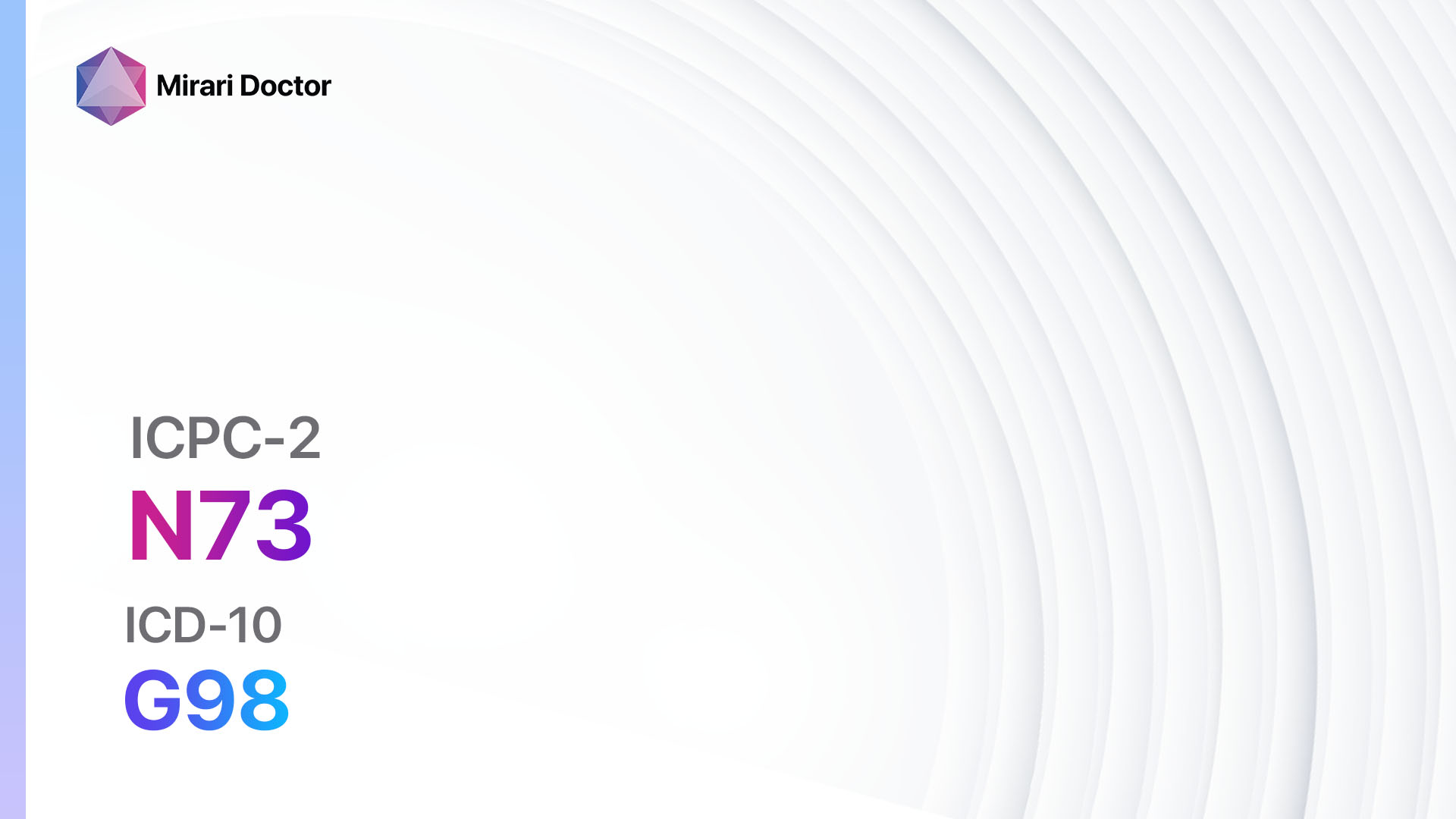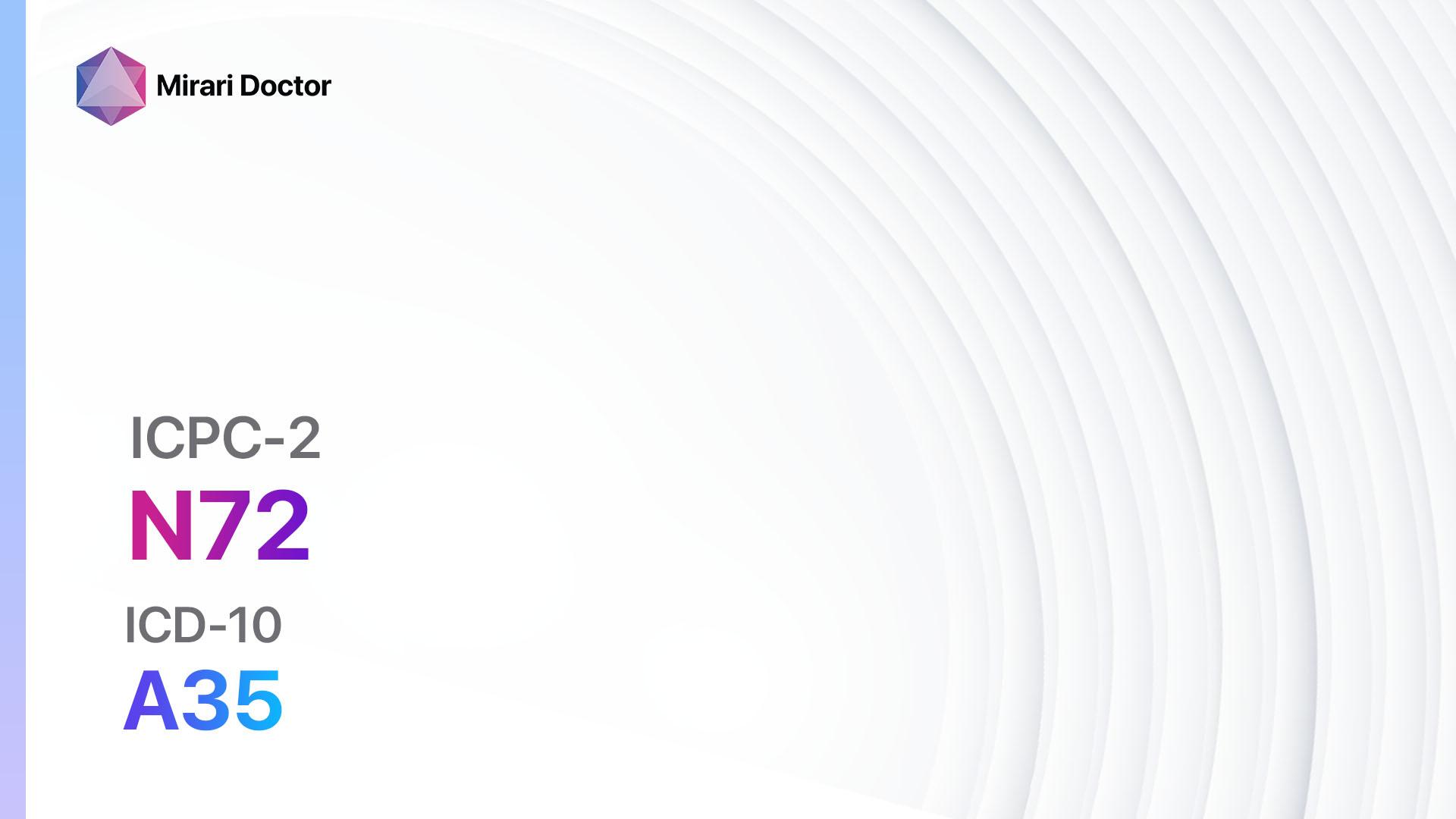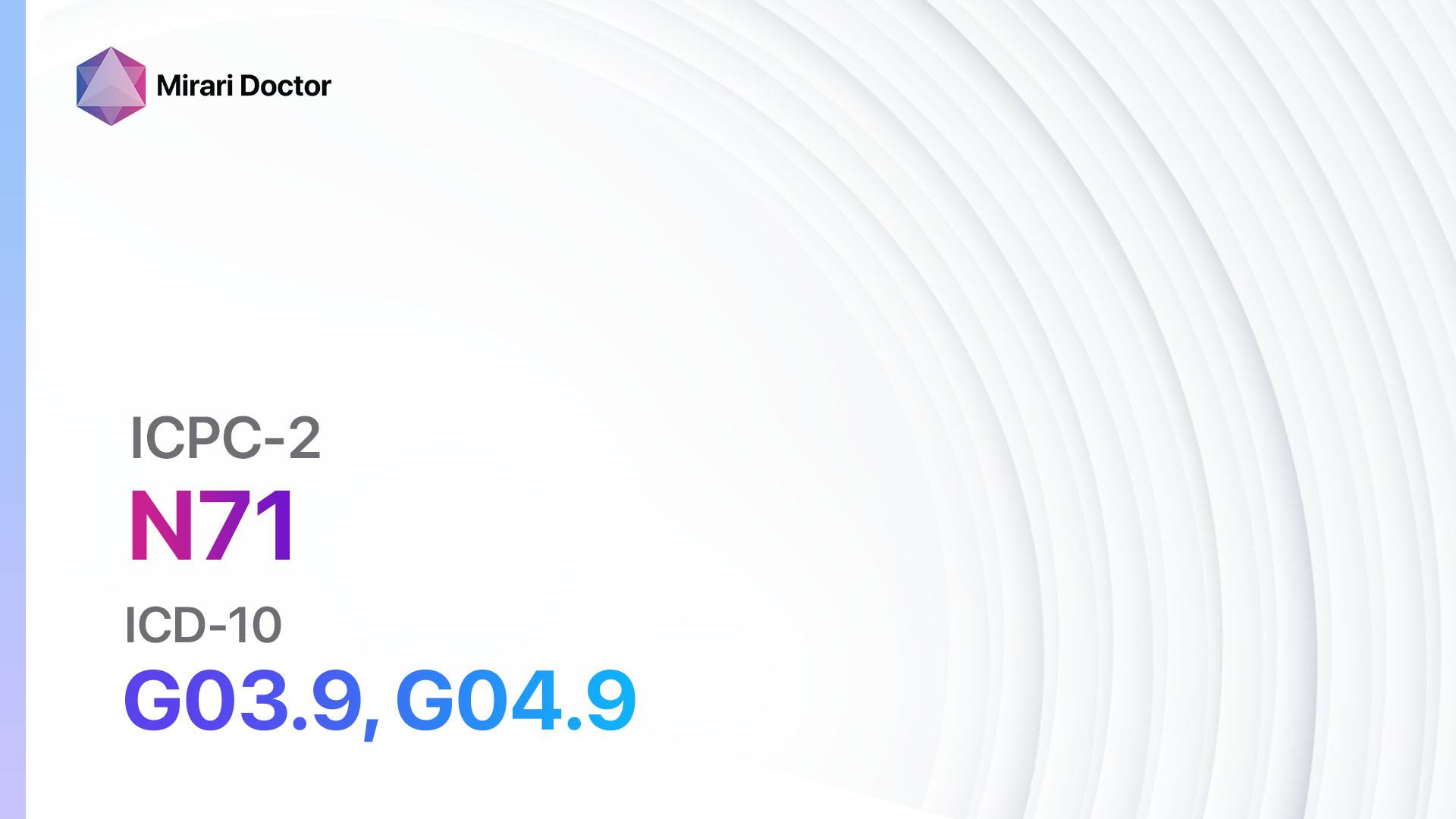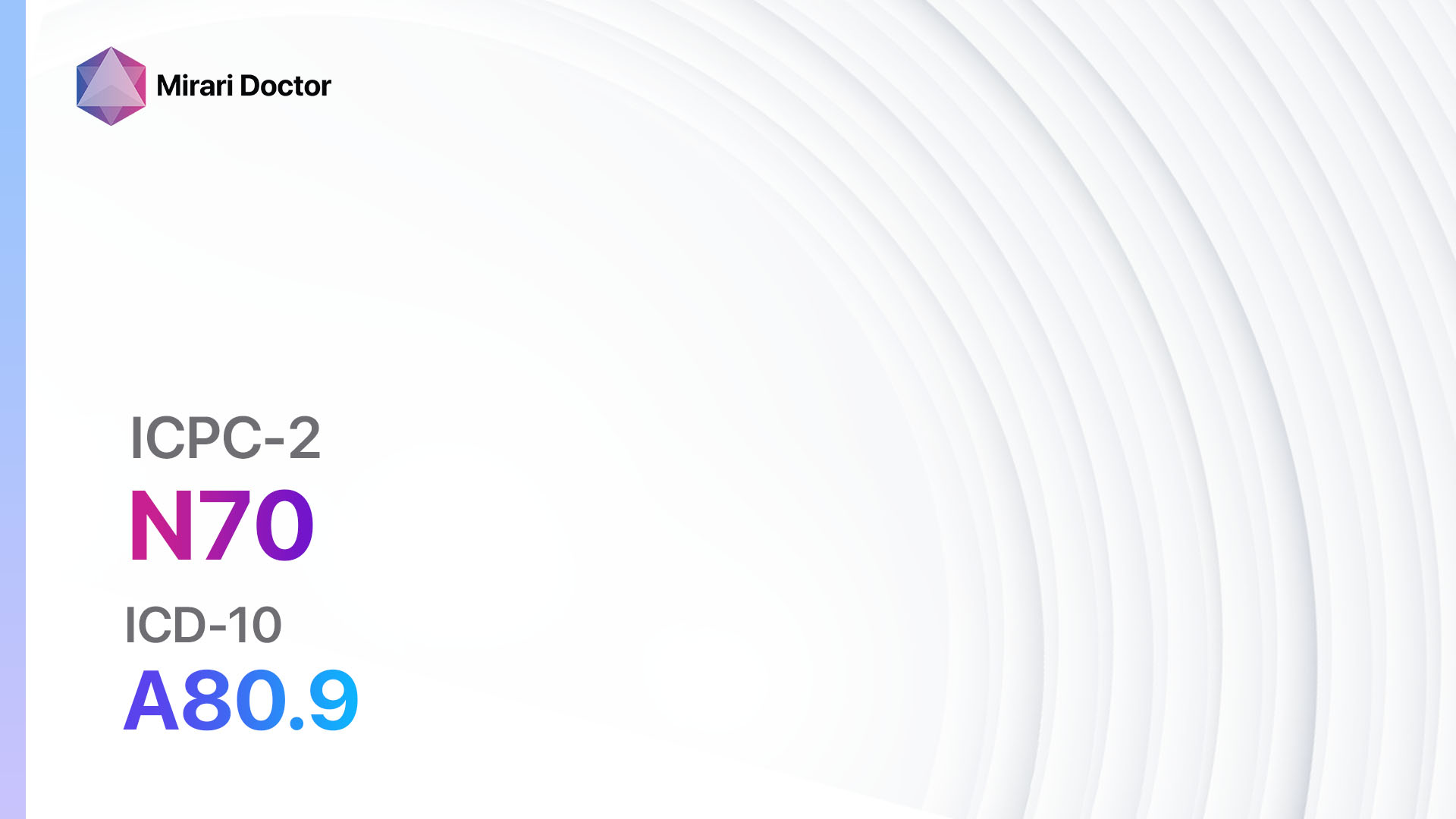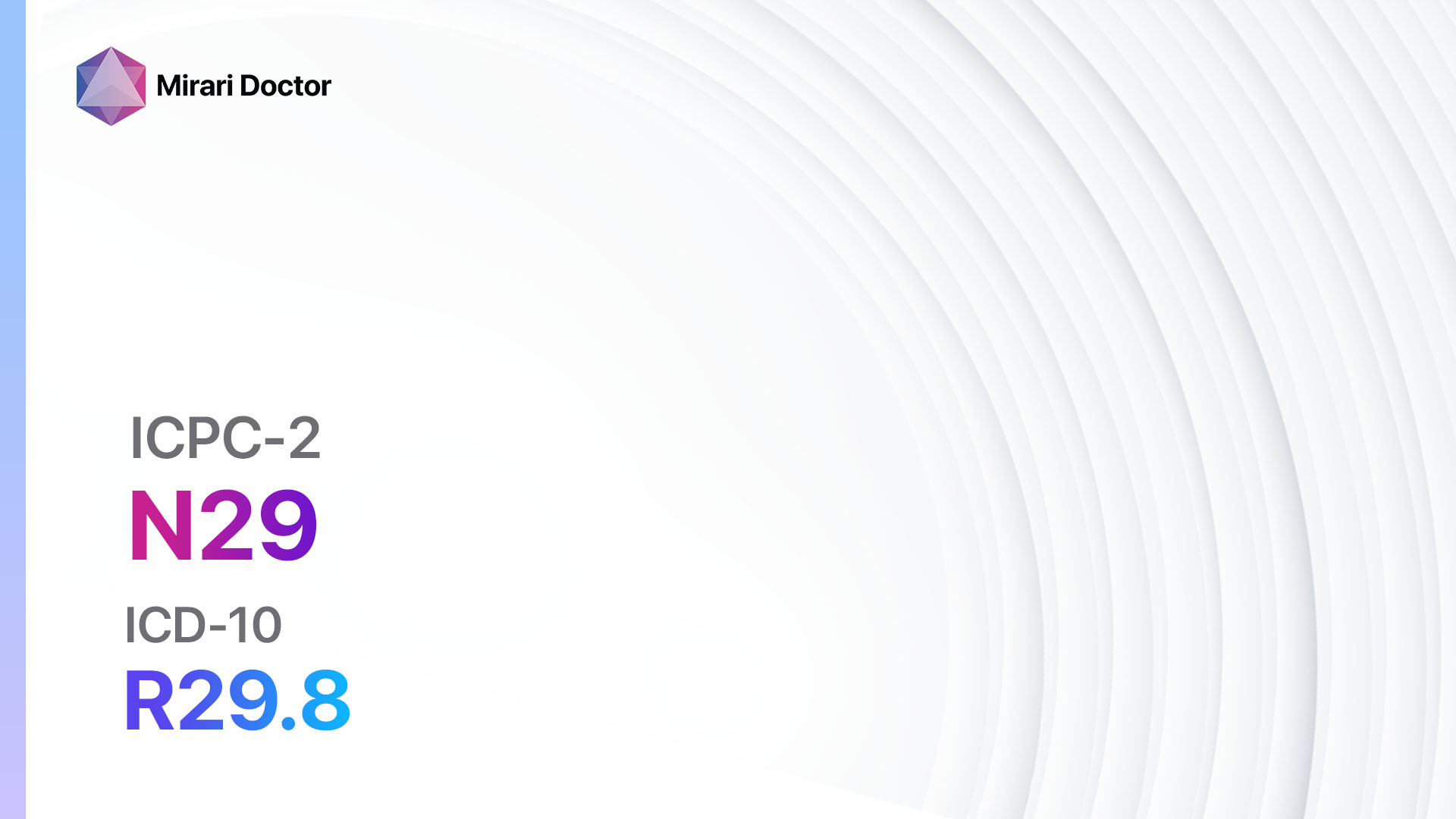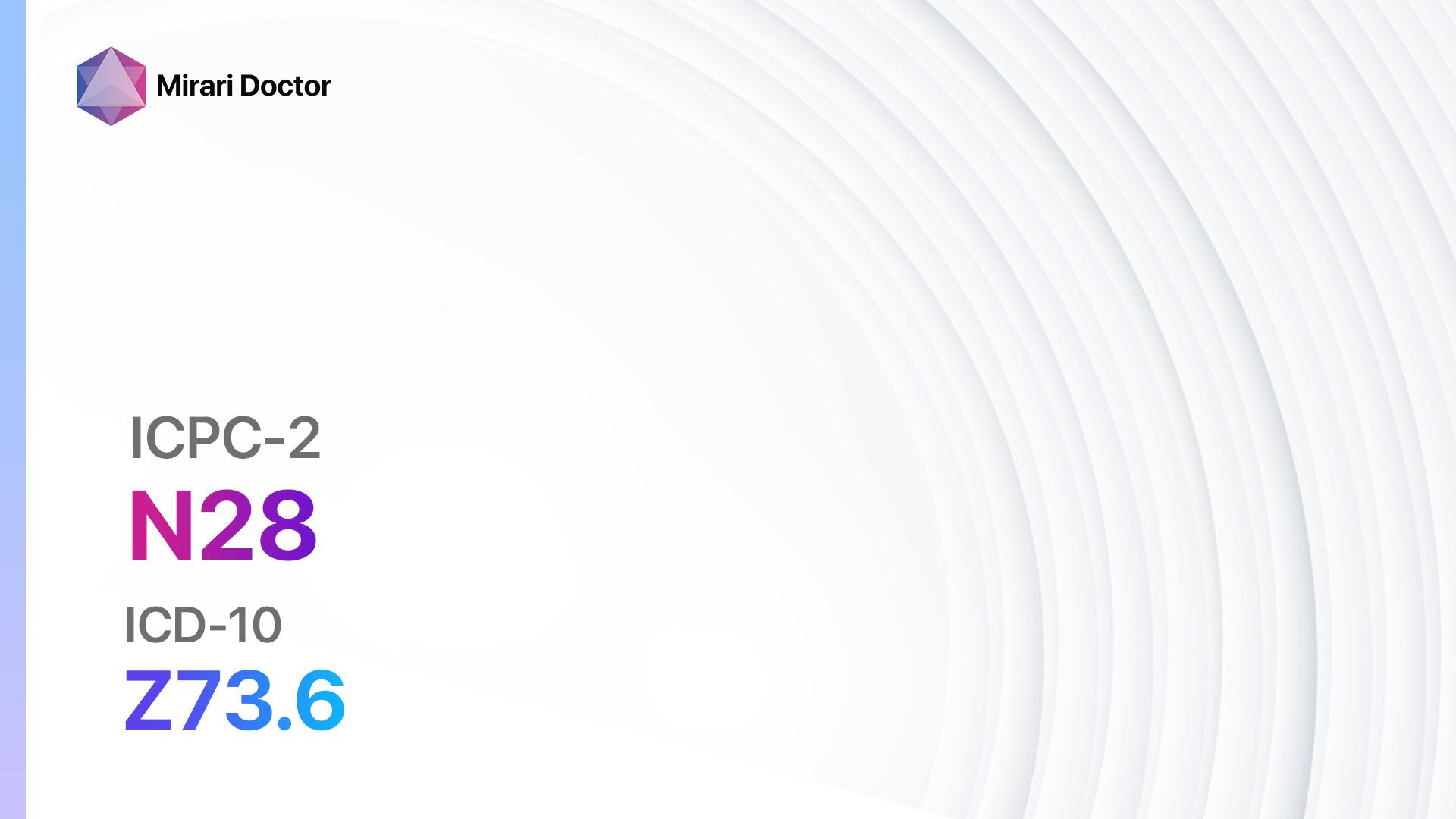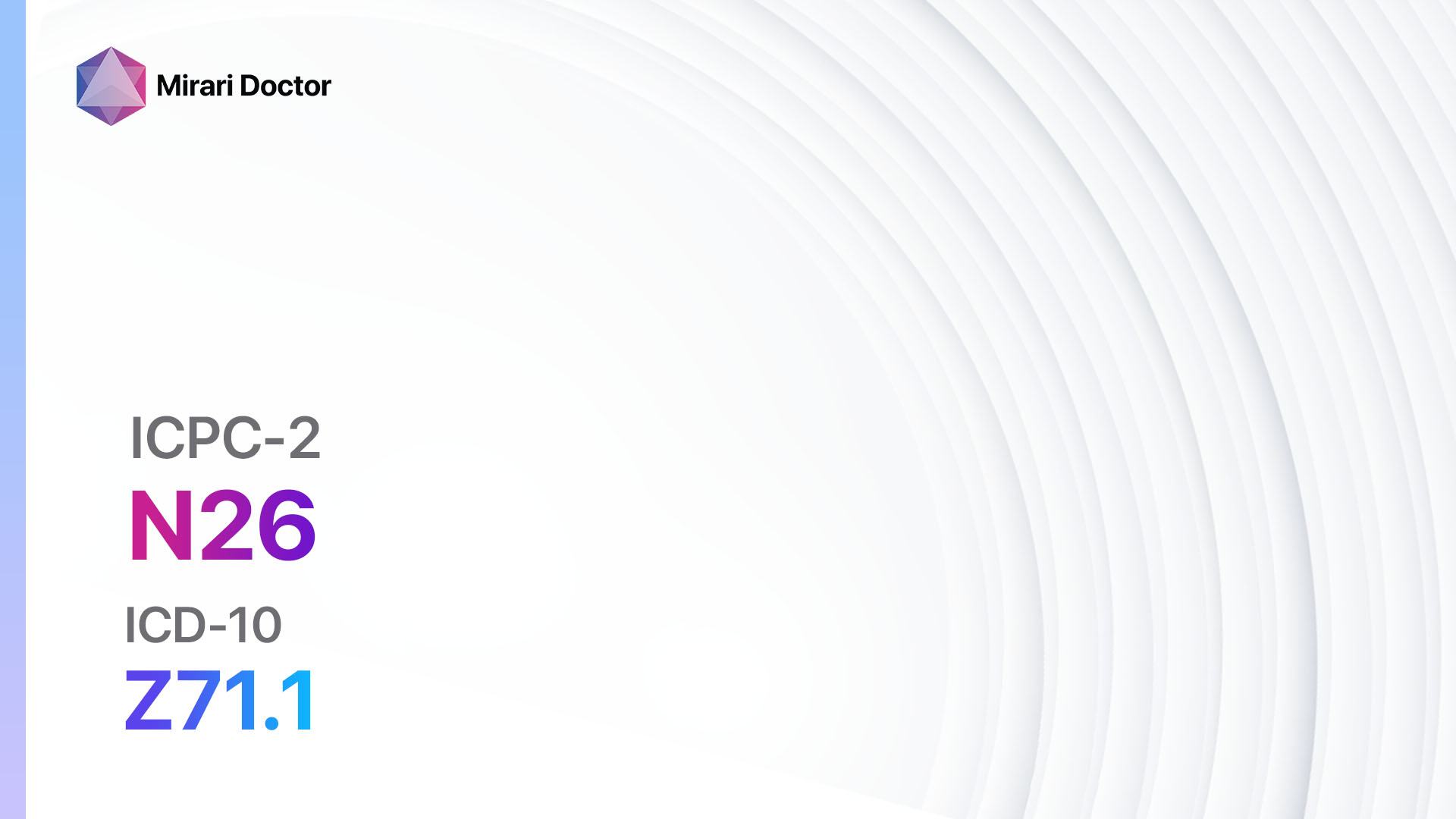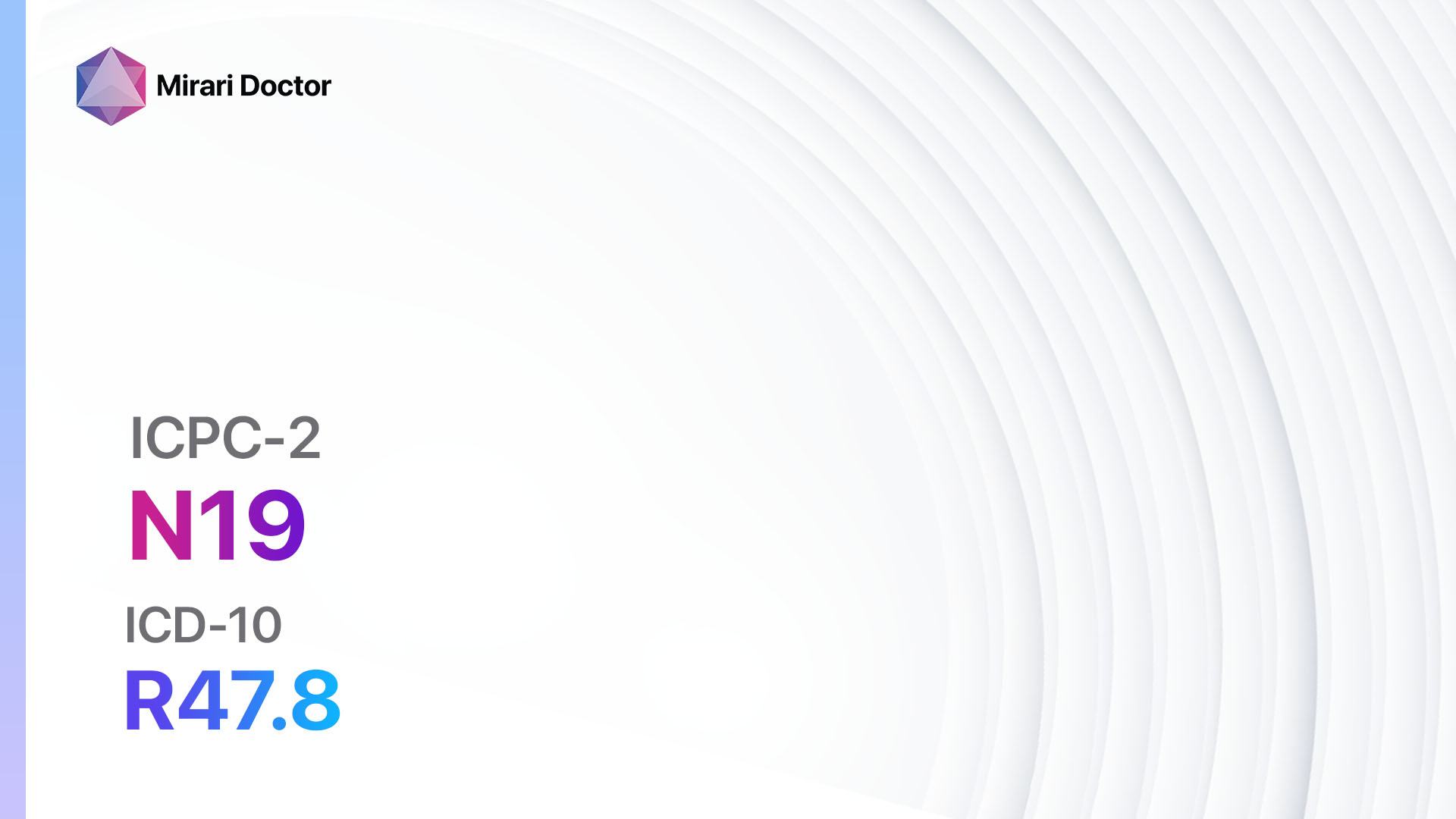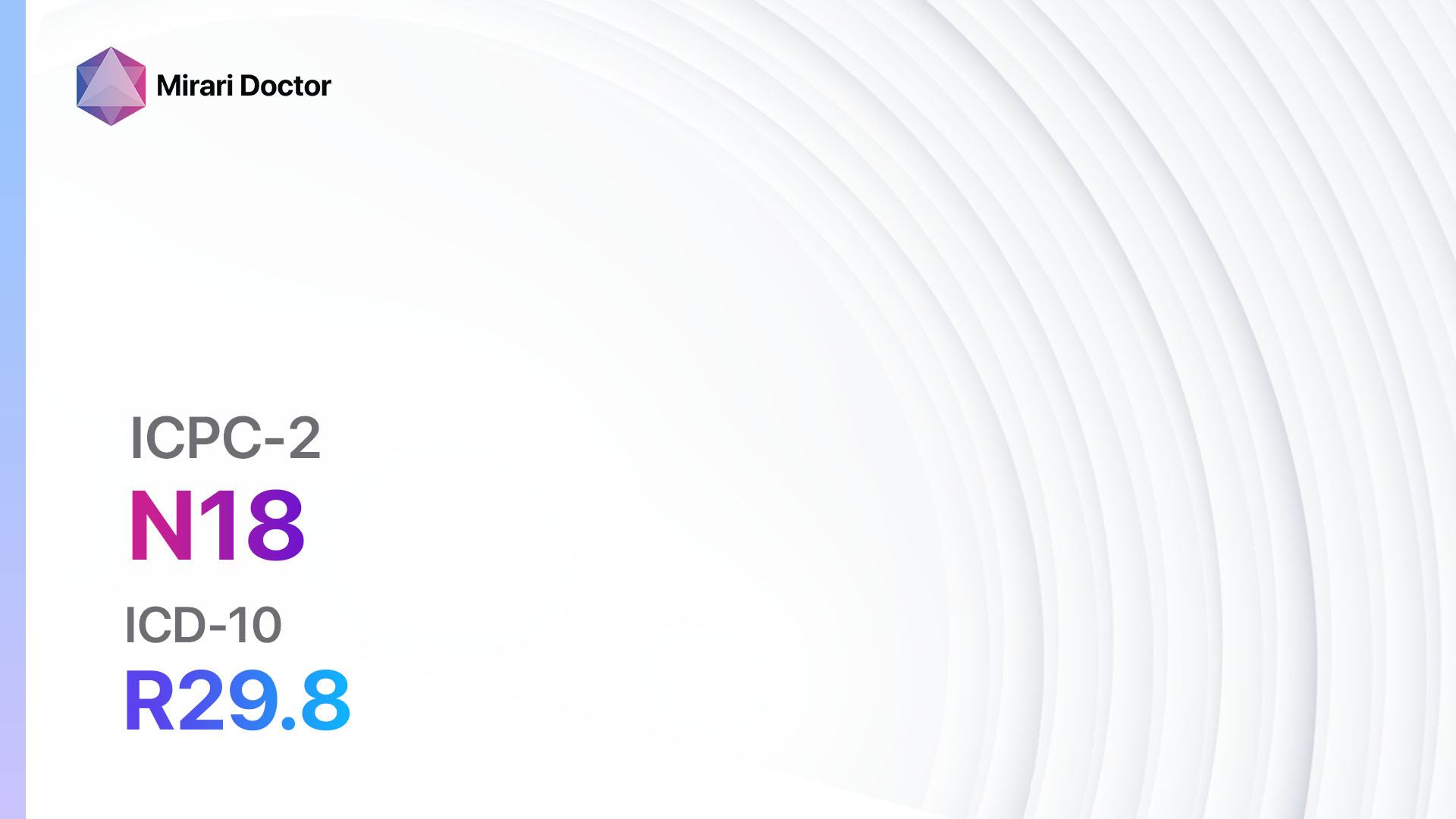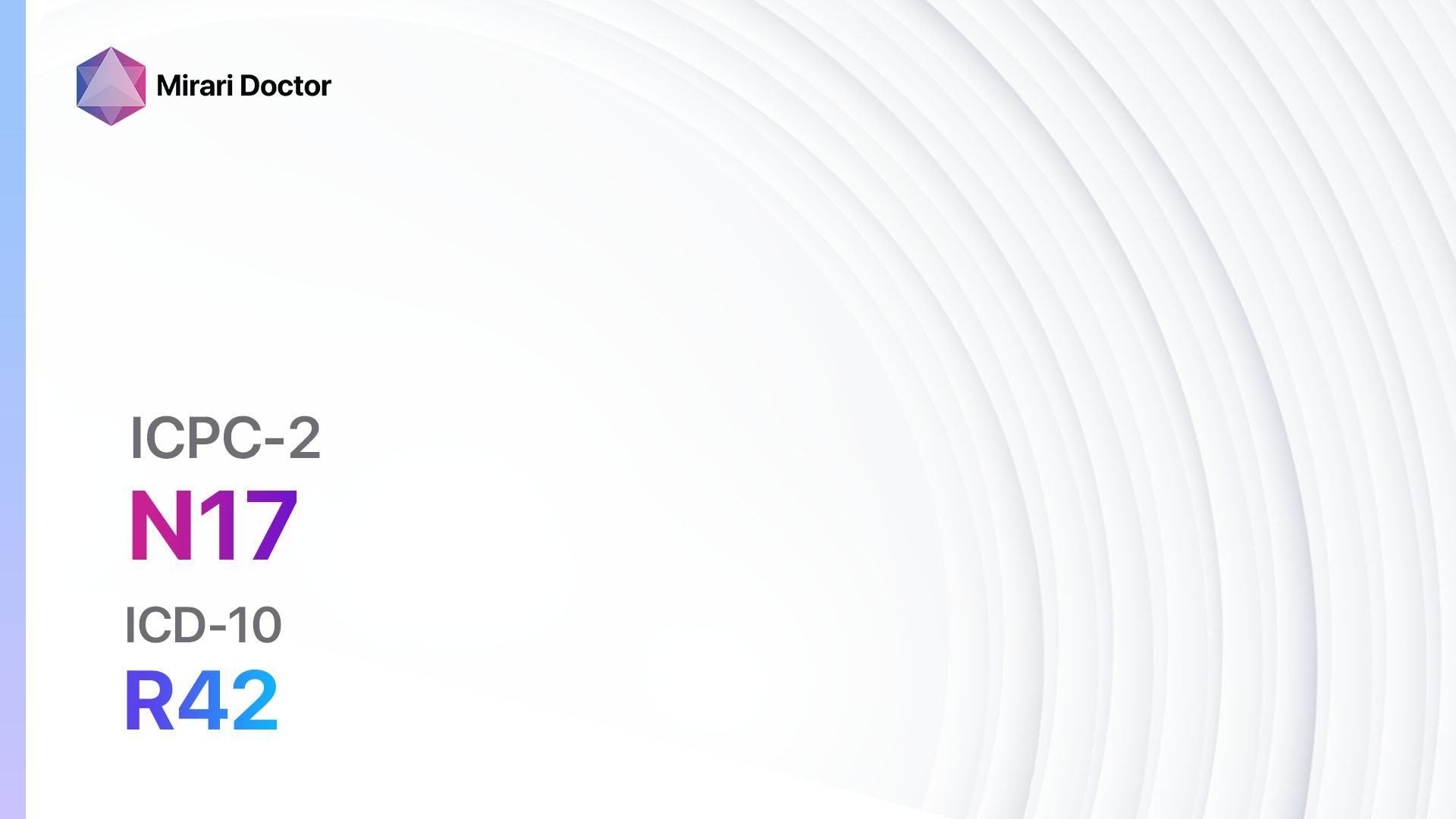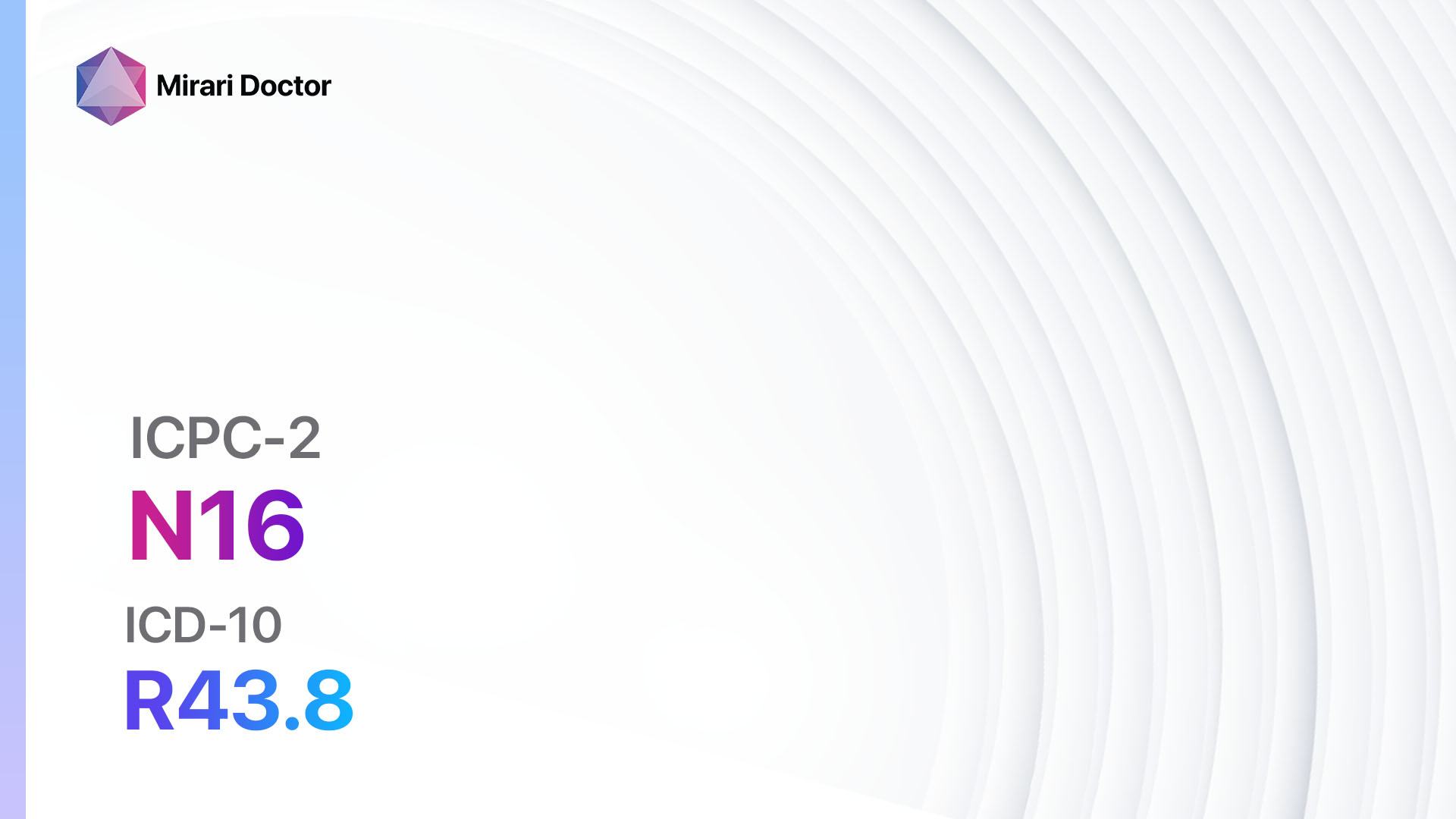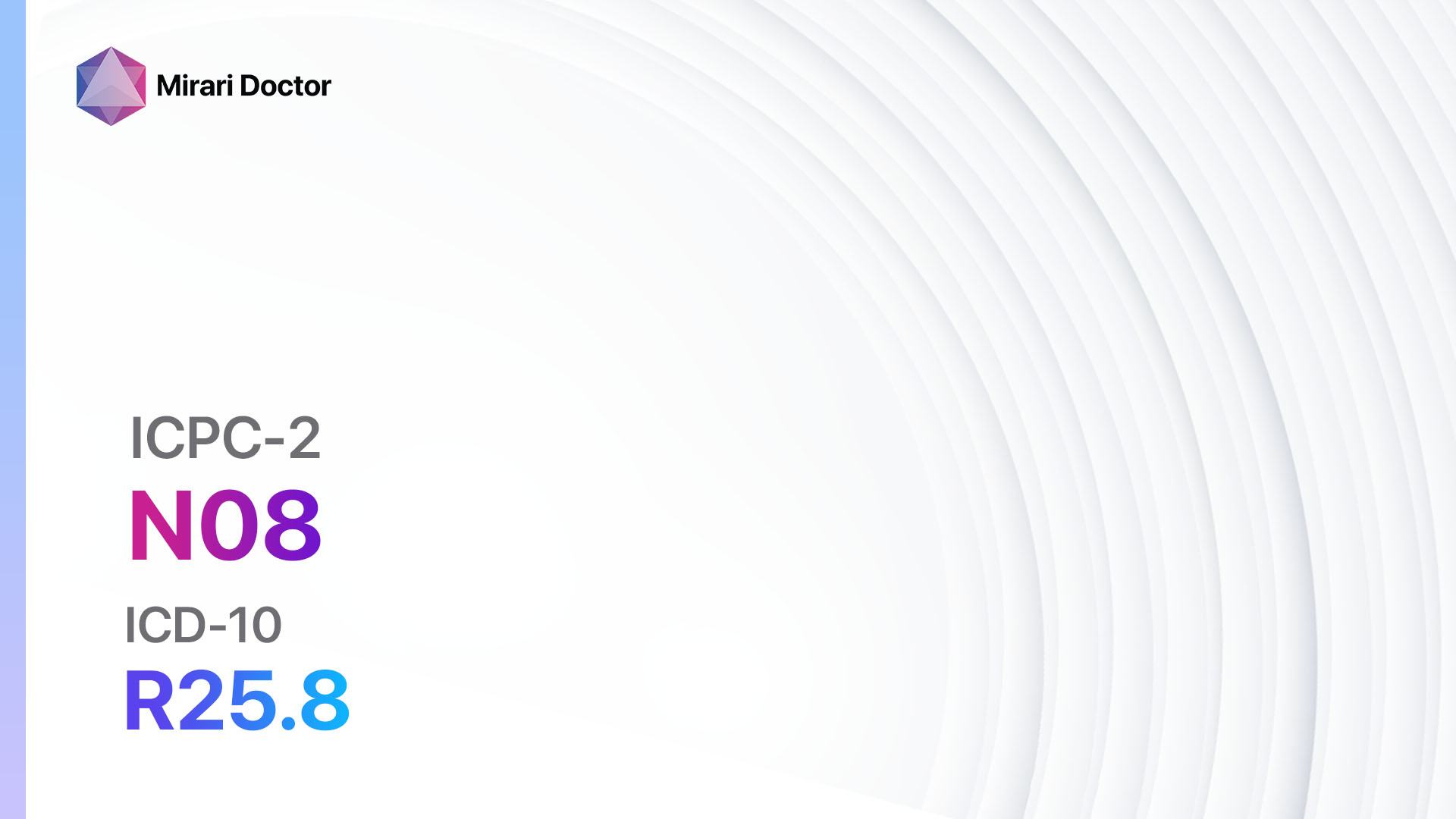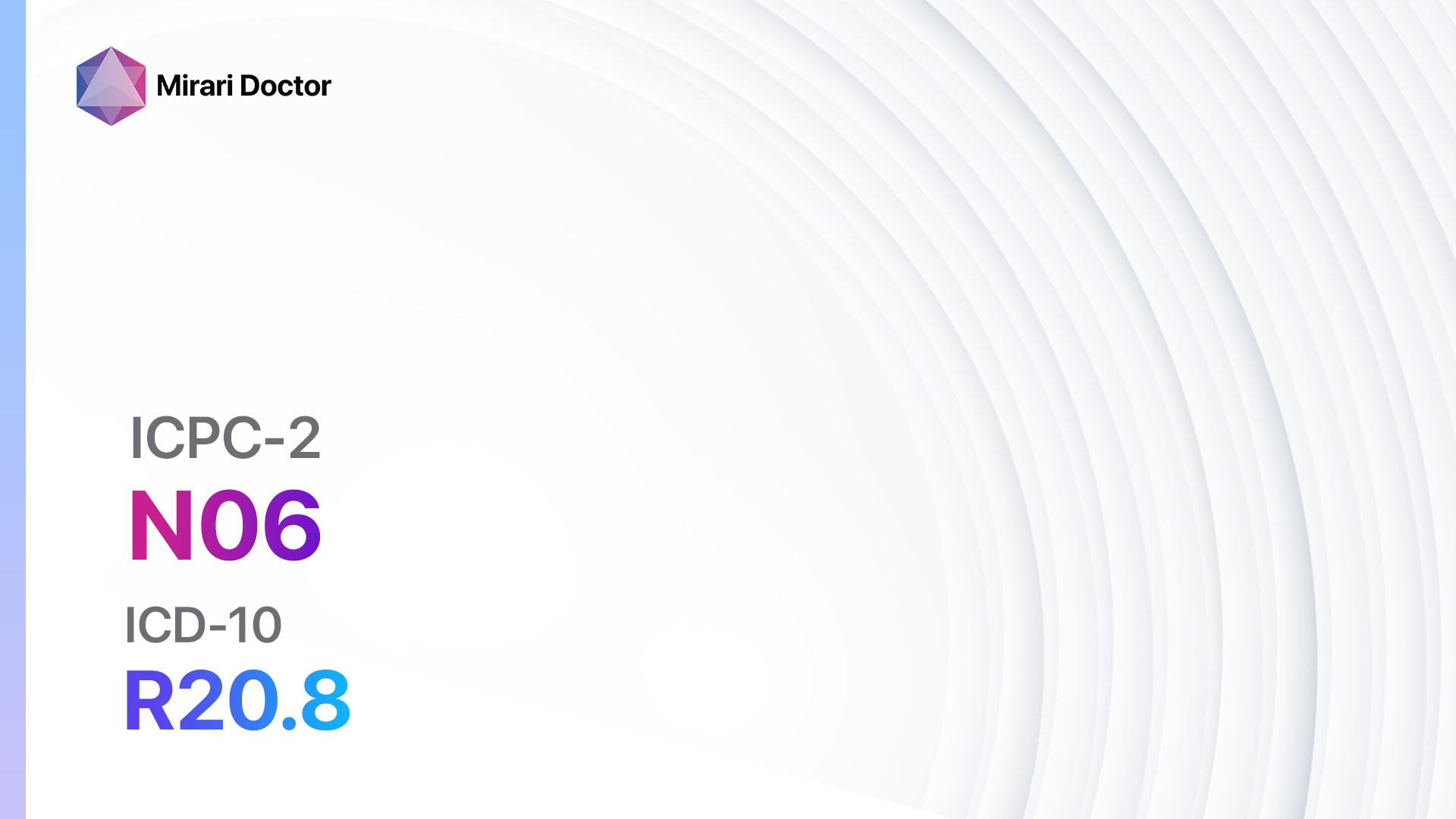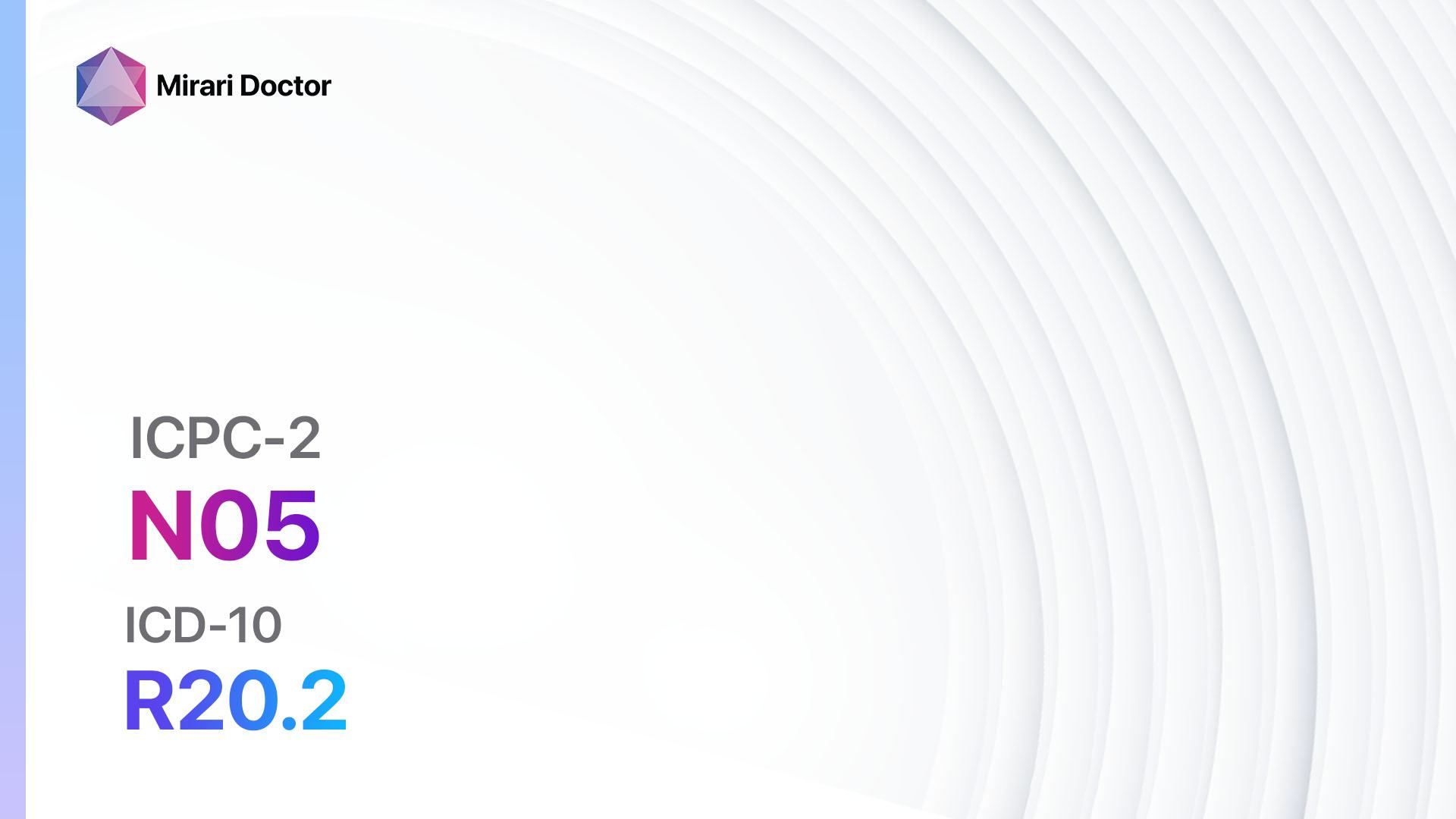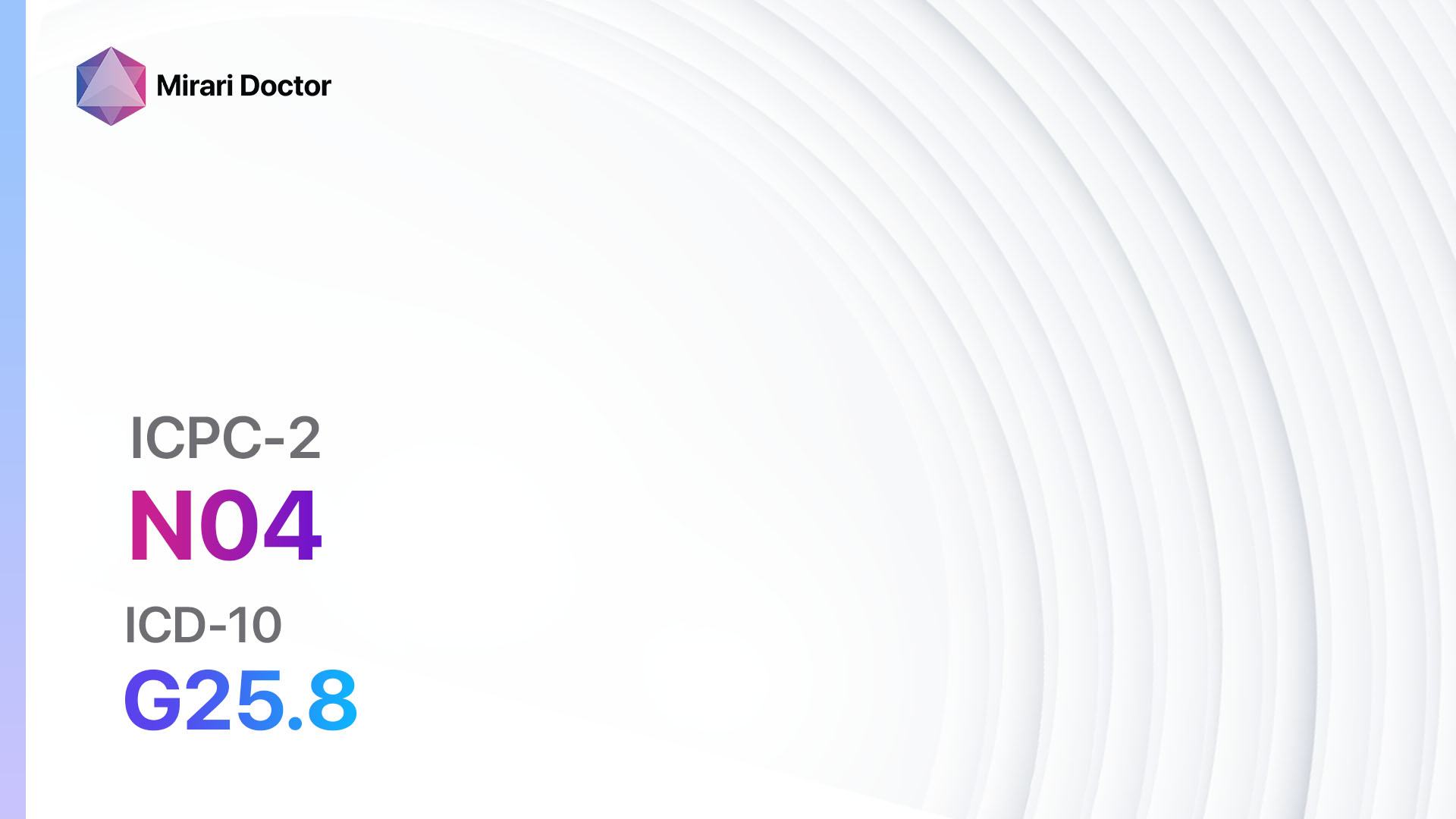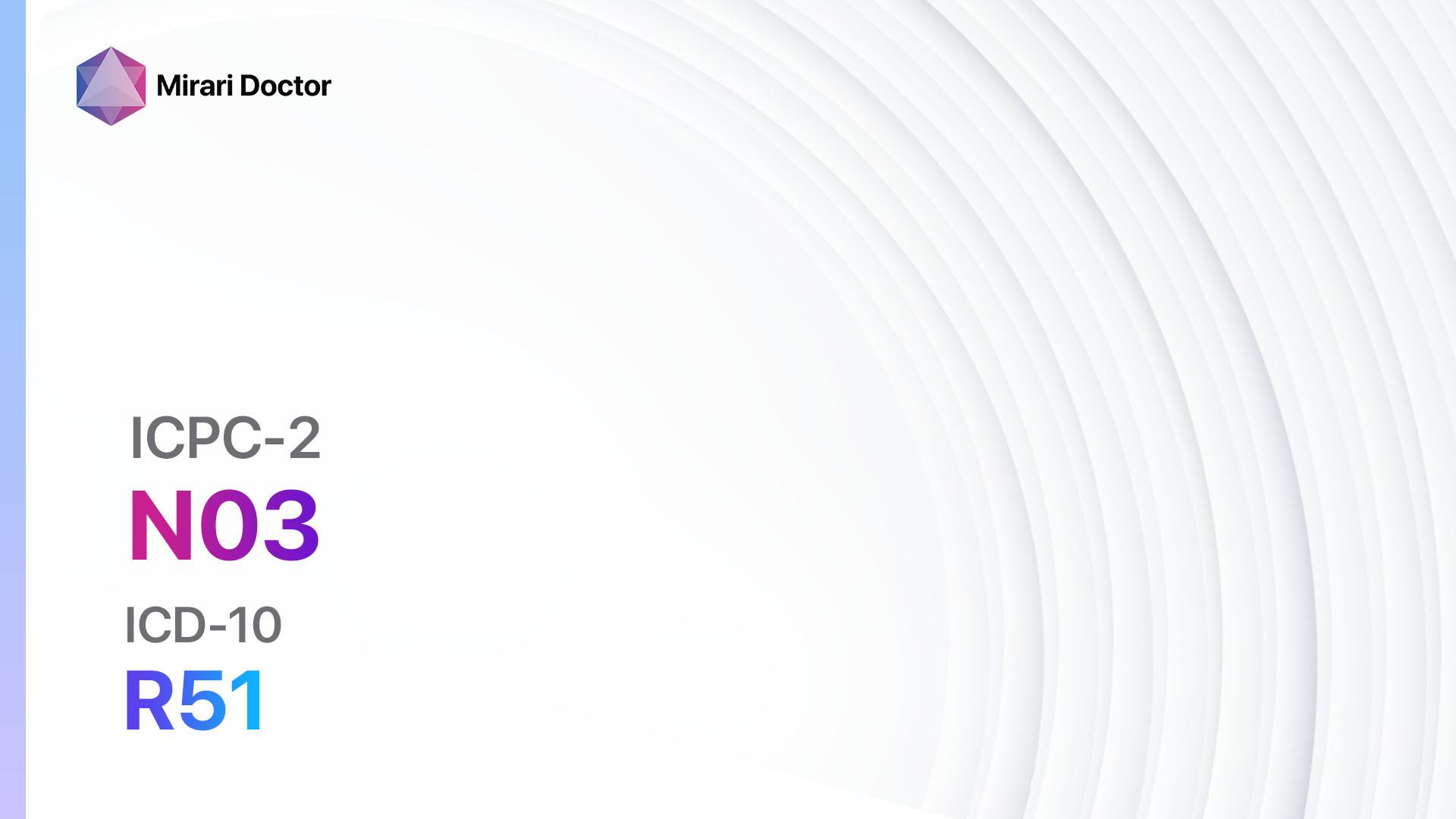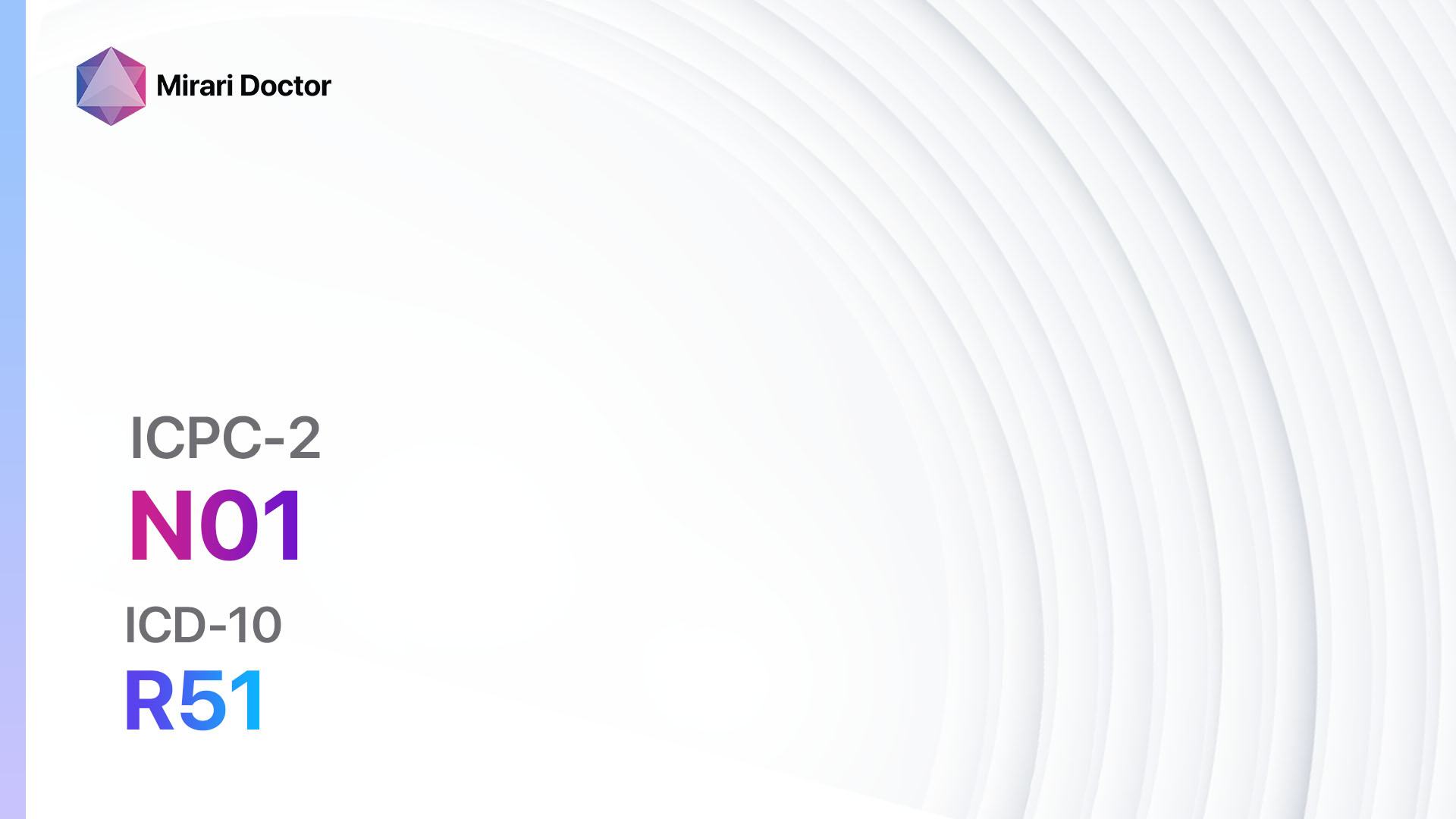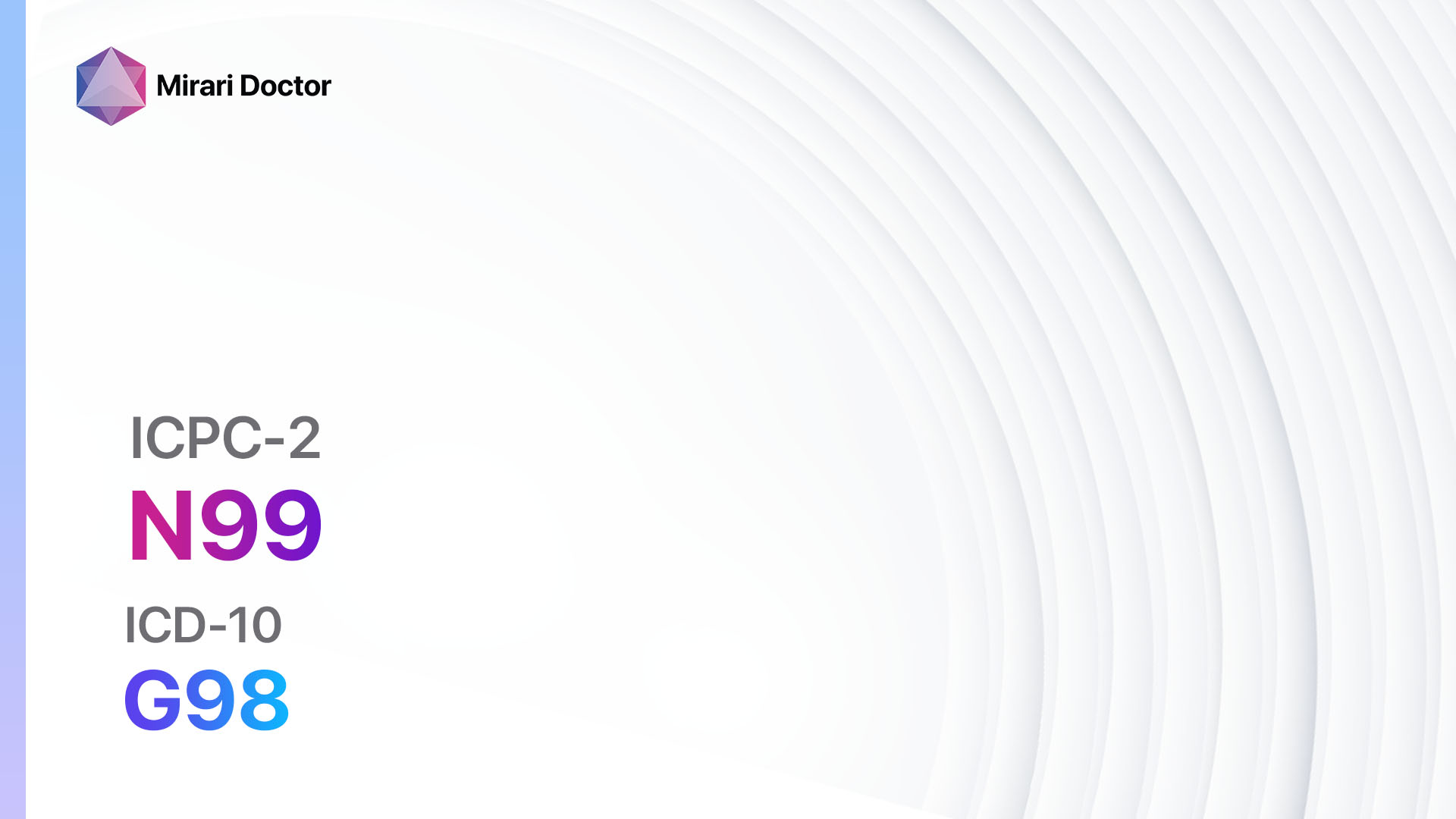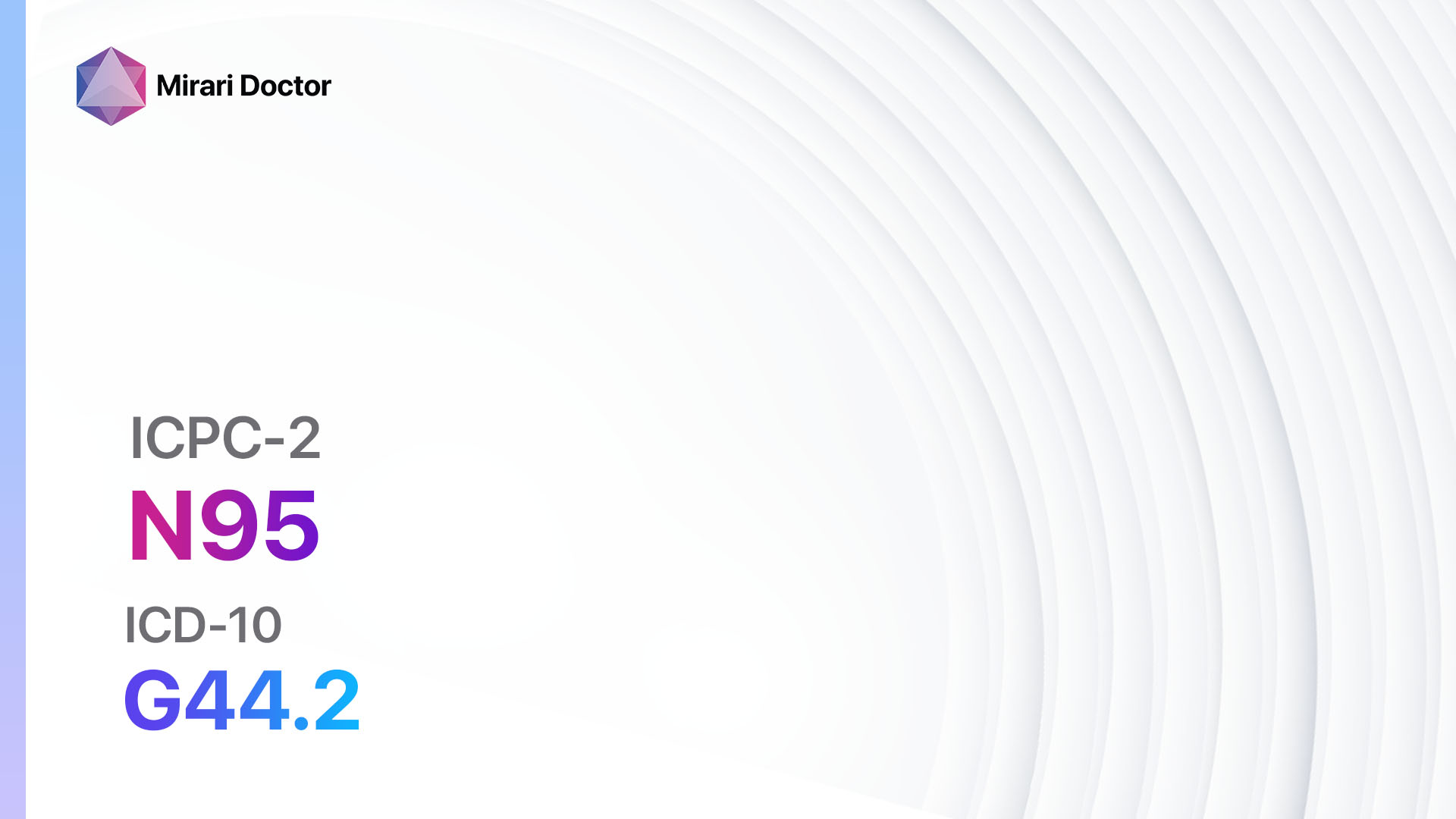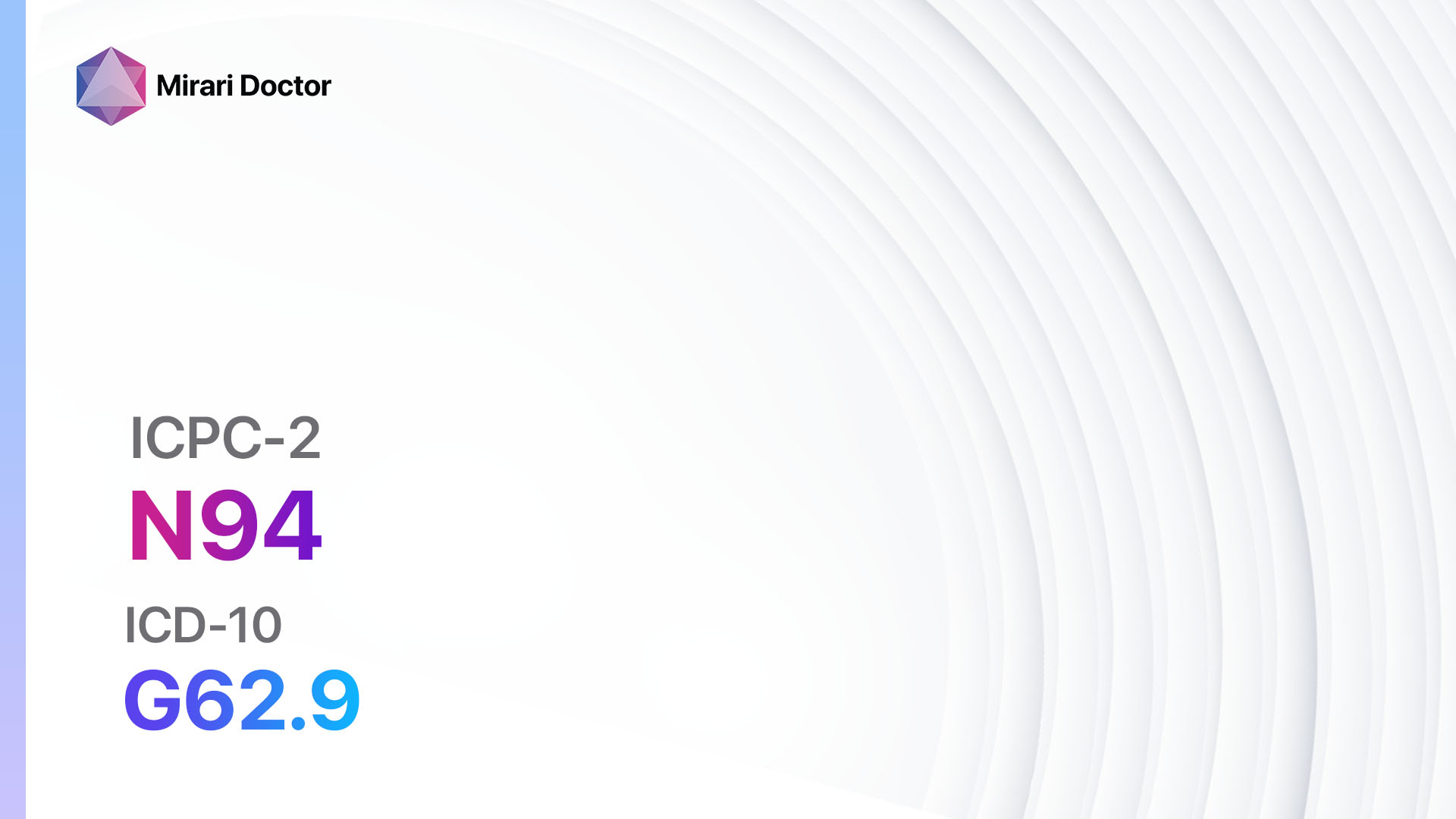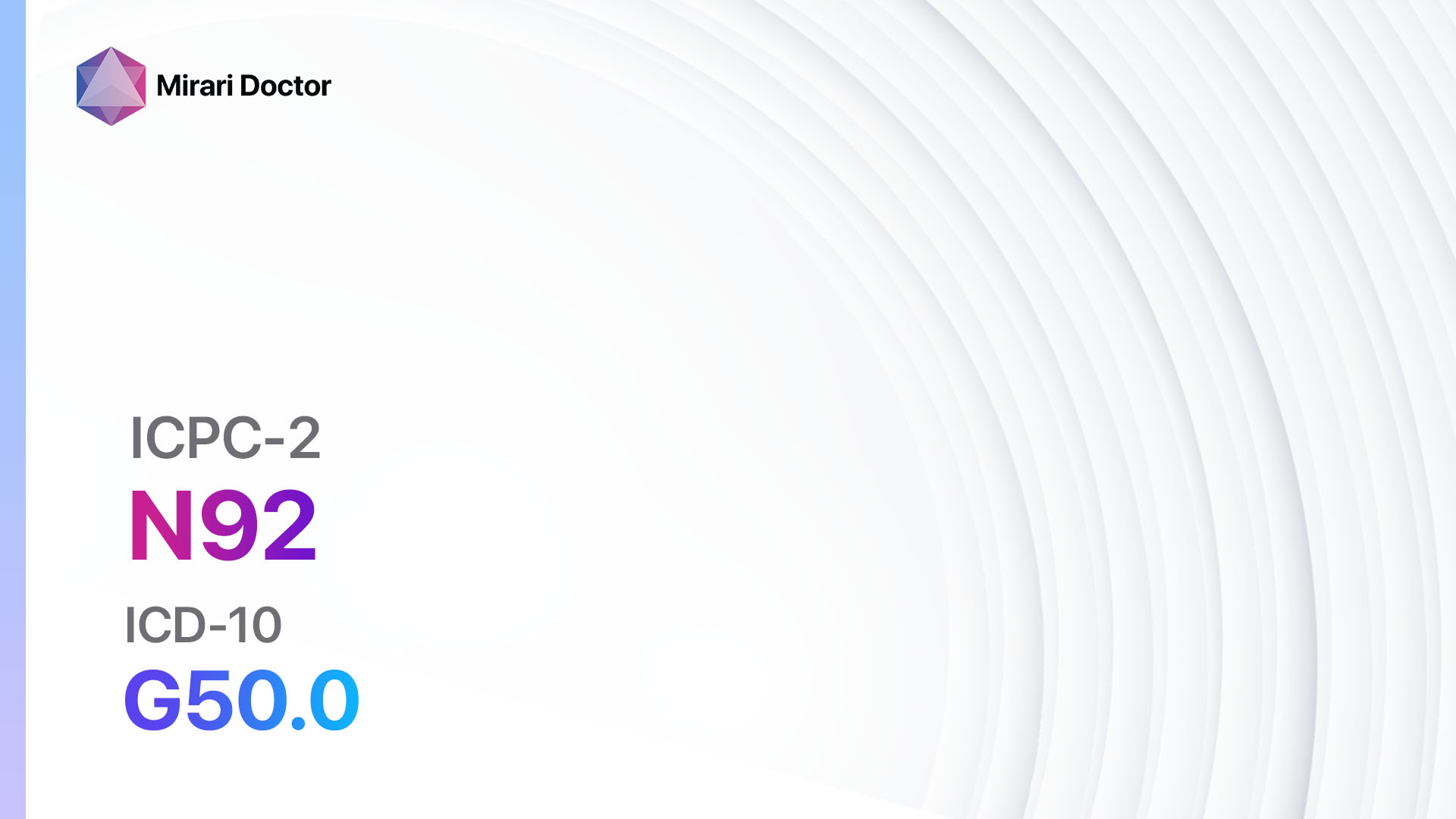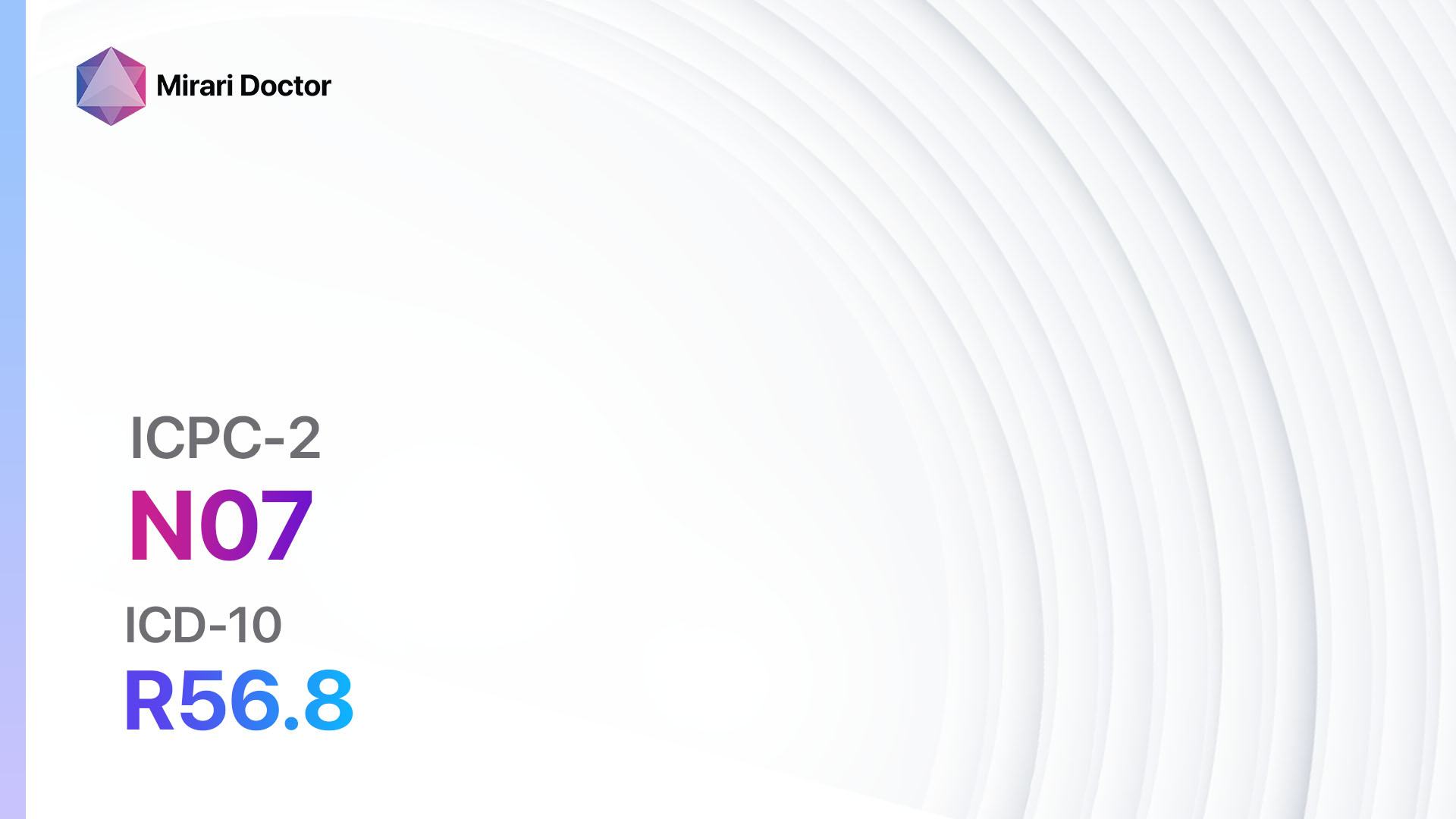
Introduction
Convulsion/seizure is a neurological condition characterized by abnormal electrical activity in the brain, leading to sudden and involuntary movements, loss of consciousness, and other symptoms. Seizures can vary in severity and duration, and they can be caused by various factors[1]. The aim of this guide is to provide a comprehensive overview of convulsion/seizure, including its symptoms, causes, diagnostic steps, possible interventions, and patient education.
Codes
- ICPC-2 Code: N07 Convulsion/seizure
- ICD-10 Code: R56.8 Other and unspecified convulsions
Symptoms
- Muscle contractions or jerking movements
- Loss of consciousness or awareness
- Staring spells
- Temporary confusion or disorientation
- Uncontrolled movements of the arms and legs
- Loss of bladder or bowel control
- Tongue biting or cheek biting
- Fatigue or sleepiness after the seizure[2][3]
Causes
- Epilepsy: A chronic neurological disorder characterized by recurrent seizures.
- Febrile seizures: Seizures that occur in young children during high fever.
- Head trauma: Seizures can occur as a result of a head injury.
- Brain tumor: Tumors in the brain can disrupt normal brain activity and trigger seizures.
- Stroke: A disruption of blood flow to the brain can cause seizures.
- Infections: Certain infections, such as meningitis or encephalitis, can lead to seizures.
- Drug or alcohol withdrawal: Abrupt cessation of certain medications or substances can trigger seizures.
- Metabolic disorders: Imbalances in electrolytes or glucose levels can cause seizures.
- Genetic factors: Some individuals may have a genetic predisposition to seizures[4][5]
Diagnostic Steps
Medical History
- Gather information about the patient’s personal and family medical history.
- Identify any risk factors for seizures, such as a history of head trauma or epilepsy.
- Ask about the frequency, duration, and characteristics of the seizures.
- Inquire about any triggers or precipitating factors for the seizures.
- Assess the patient’s overall health and any comorbid conditions[6].
Physical Examination
- Perform a thorough neurological examination to assess motor function, reflexes, and coordination.
- Check vital signs, including blood pressure, heart rate, and temperature.
- Look for any physical signs of trauma or injury.
- Evaluate the patient’s mental status, including level of consciousness and cognitive function.
- Examine the eyes for any abnormalities, such as nystagmus or pupillary changes.[7]
Laboratory Tests
- Complete blood count (CBC): To check for any signs of infection or abnormalities in blood cell counts.
- Electrolyte panel: To assess the levels of sodium, potassium, and other electrolytes.
- Glucose level: To rule out hypoglycemia or hyperglycemia as a cause of seizures.
- Liver function tests: To evaluate liver health and rule out any liver-related causes of seizures.
- Kidney function tests: To assess renal function and rule out any kidney-related causes of seizures.
- Toxicology screen: To detect the presence of drugs or toxins in the body.
- Lumbar puncture: If meningitis or encephalitis is suspected, a sample of cerebrospinal fluid may be collected for analysis.[8]
Diagnostic Imaging
- Electroencephalogram (EEG): A test that records the electrical activity of the brain to detect abnormal patterns associated with seizures.
- Magnetic resonance imaging (MRI): To visualize the brain and identify any structural abnormalities or tumors.
- Computed tomography (CT) scan: To obtain detailed images of the brain and rule out any acute causes of seizures, such as bleeding or trauma.
- Positron emission tomography (PET) scan: To assess brain function and identify areas of abnormal activity.[9]
Other Tests
- Video monitoring: In some cases, patients may be admitted to an epilepsy monitoring unit for continuous video and EEG monitoring to capture and analyze seizure activity.
- Genetic testing: If a genetic cause of seizures is suspected, genetic testing may be performed to identify specific mutations or abnormalities.[10]
Follow-up and Patient Education
- Schedule follow-up appointments to monitor the patient’s condition and adjust treatment as needed.
- Provide education on seizure triggers, safety precautions, and lifestyle modifications.
- Discuss the importance of medication adherence and potential side effects.
- Address any concerns or questions the patient may have.
- Encourage the patient to keep a seizure diary to track seizure frequency, duration, and triggers.
Possible Interventions
Traditional Interventions
Medications:
Top 5 drugs for Convulsion/Seizure:
- Phenytoin:
- Cost: $10-$50/month.
- Contraindications: Hypersensitivity to phenytoin, history of liver disease.
- Side effects: Dizziness, drowsiness, nausea.
- Severe side effects: Stevens-Johnson syndrome, toxic epidermal necrolysis.
- Drug interactions: Warfarin, oral contraceptives.
- Warning: Regular monitoring of blood levels required.
- Carbamazepine:
- Cost: $10-$50/month.
- Contraindications: Hypersensitivity to carbamazepine, history of bone marrow suppression.
- Side effects: Dizziness, drowsiness, rash.
- Severe side effects: Aplastic anemia, agranulocytosis.
- Drug interactions: Grapefruit juice, oral contraceptives.
- Warning: Regular monitoring of blood levels required.
- Valproic acid:
- Cost: $10-$50/month.
- Contraindications: Hypersensitivity to valproic acid, history of liver disease.
- Side effects: Nausea, vomiting, hair loss.
- Severe side effects: Hepatotoxicity, pancreatitis.
- Drug interactions: Lamotrigine, phenytoin.
- Warning: Regular monitoring of liver function required.
- Lamotrigine:
- Cost: $10-$50/month.
- Contraindications: Hypersensitivity to lamotrigine, history of Stevens-Johnson syndrome.
- Side effects: Headache, dizziness, rash.
- Severe side effects: Stevens-Johnson syndrome, toxic epidermal necrolysis.
- Drug interactions: Valproic acid, carbamazepine.
- Warning: Regular monitoring for rash and signs of hypersensitivity.
- Levetiracetam:
- Cost: $10-$50/month.
- Contraindications: Hypersensitivity to levetiracetam.
- Side effects: Fatigue, dizziness, irritability.
- Severe side effects: Psychiatric symptoms, suicidal ideation.
- Drug interactions: None significant.
- Warning: May cause behavioral changes or mood disturbances.
Alternative Drugs:
- Gabapentin: An anticonvulsant used as an alternative or adjunct to traditional medications.
- Topiramate: Another anticonvulsant that may be effective in controlling seizures.
- Oxcarbazepine: A newer anticonvulsant with a similar mechanism of action to carbamazepine.
- Zonisamide: An anticonvulsant that may be used as an adjunct to other medications.
- Clobazam: A benzodiazepine used for the treatment of seizures.
Surgical Procedures:
- Vagus nerve stimulation (VNS): A device is implanted in the chest to deliver electrical impulses to the vagus nerve, which can help reduce seizure frequency. Cost: $20,000 to $30,000.
- Responsive neurostimulation (RNS): A device is implanted in the brain to detect and respond to abnormal electrical activity, helping to prevent seizures. Cost: $40,000 to $50,000.
- Surgical resection: In some cases, surgery may be performed to remove the area of the brain responsible for seizures. Cost: $50,000 to $100,000.
Alternative Interventions
- Acupuncture: May help reduce seizure frequency and improve overall well-being. Cost: $60-$120 per session.
- Yoga and meditation: Can help reduce stress and promote relaxation, potentially reducing seizure frequency. Cost: Varies depending on the location and instructor.
- Ketogenic diet: A high-fat, low-carbohydrate diet that has been shown to reduce seizures in some individuals. Cost: Varies depending on dietary needs and food choices.
- Biofeedback: A technique that helps individuals learn to control their body’s physiological responses, potentially reducing seizure activity. Cost: $75-$150 per session.
- Herbal supplements: Some herbs, such as passionflower or valerian root, may have calming effects and help reduce seizure frequency. Cost: Varies depending on the specific supplement.
Lifestyle Interventions
- Regular sleep schedule: Getting enough sleep and maintaining a consistent sleep schedule can help reduce seizure frequency. Cost: None.
- Stress management: Engaging in stress-reducing activities, such as exercise, meditation, or hobbies, can help minimize seizure triggers. Cost: Varies depending on the chosen activities.
- Avoiding triggers: Identifying and avoiding specific triggers, such as flashing lights or certain foods, can help prevent seizures. Cost: None.
- Regular exercise: Engaging in regular physical activity can help improve overall health and potentially reduce seizure frequency. Cost: Varies depending on the chosen activities.
- Healthy diet: Eating a balanced diet rich in fruits, vegetables, and whole grains can support overall health and potentially reduce seizure activity. Cost: Varies depending on dietary choices.
It is important to note that the cost ranges provided are approximate and may vary depending on the location and availability of the interventions. It is recommended to consult with healthcare professionals for personalized treatment options and cost estimates.
Mirari Cold Plasma Alternative Intervention
Understanding Mirari Cold Plasma
- Safe and Non-Invasive Treatment: Mirari Cold Plasma is a safe and non-invasive treatment option for various skin conditions. It does not require incisions, minimizing the risk of scarring, bleeding, or tissue damage.
- Efficient Extraction of Foreign Bodies: Mirari Cold Plasma facilitates the removal of foreign bodies from the skin by degrading and dissociating organic matter, allowing easier access and extraction.
- Pain Reduction and Comfort: Mirari Cold Plasma has a local analgesic effect, providing pain relief during the treatment, making it more comfortable for the patient.
- Reduced Risk of Infection: Mirari Cold Plasma has antimicrobial properties, effectively killing bacteria and reducing the risk of infection.
- Accelerated Healing and Minimal Scarring: Mirari Cold Plasma stimulates wound healing and tissue regeneration, reducing healing time and minimizing the formation of scars.
Mirari Cold Plasma Prescription
Video instructions for using Mirari Cold Plasma Device – N07 Convulsion/seizure (ICD-10:R56.8)
| Mild | Moderate | Severe |
| Mode setting: 2 (Wound Healing) Location: 0 (Localized) Morning: 15 minutes, Evening: 15 minutes |
Mode setting: 2 (Wound Healing) Location: 0 (Localized) Morning: 30 minutes, Lunch: 30 minutes, Evening: 30 minutes |
Mode setting: 2 (Wound Healing) Location: 0 (Localized) Morning: 30 minutes, Lunch: 30 minutes, Evening: 30 minutes |
| Mode setting: 7 (Immunotherapy) Location: 1 (Sacrum) Morning: 15 minutes, Evening: 15 minutes |
Mode setting: 7 (Immunotherapy) Location: 1 (Sacrum) Morning: 30 minutes, Lunch: 30 minutes, Evening: 30 minutes |
Mode setting: 7 (Immunotherapy) Location: 1 (Sacrum) Morning: 30 minutes, Lunch: 30 minutes, Evening: 30 minutes |
| Mode setting: 7 (Immunotherapy) Location: 7 (Neuro system & ENT) Morning: 15 minutes, Evening: 15 minutes |
Mode setting: 7 (Immunotherapy) Location: 7 (Neuro system & ENT) Morning: 30 minutes, Lunch: 30 minutes, Evening: 30 minutes |
Mode setting: 7 (Immunotherapy) Location: 7 (Neuro system & ENT) Morning: 30 minutes, Lunch: 30 minutes, Evening: 30 minutes |
| Mode setting: 7 (Immunotherapy) Location: 7 (Neuro system & ENT) Morning: 15 minutes, Evening: 15 minutes |
Mode setting: 7 (Immunotherapy) Location: 7 (Neuro system & ENT) Morning: 30 minutes, Lunch: 30 minutes, Evening: 30 minutes |
Mode setting: 7 (Immunotherapy) Location: 7 (Neuro system & ENT) Morning: 30 minutes, Lunch: 30 minutes, Evening: 30 minutes |
| Total Morning: 60 minutes approx. $10 USD, Evening: 60 minutes approx. $10 USD |
Total Morning: 120 minutes approx. $20 USD, Lunch: 120 minutes approx. $20 USD, Evening: 120 minutes approx. $20 USD, |
Total Morning: 120 minutes approx. $20 USD, Lunch: 120 minutes approx. $20 USD, Evening: 120 minutes approx. $20 USD, |
| Usual treatment for 7-60 days approx. $140 USD – $1200 USD | Usual treatment for 6-8 weeks approx. $2,520 USD – $3,360 USD |
Usual treatment for 3-6 months approx. $5,400 USD – $10,800 USD
|
 |
|
Use the Mirari Cold Plasma device to treat Convulsion/seizure effectively.
WARNING: MIRARI COLD PLASMA IS DESIGNED FOR THE HUMAN BODY WITHOUT ANY ARTIFICIAL OR THIRD PARTY PRODUCTS. USE OF OTHER PRODUCTS IN COMBINATION WITH MIRARI COLD PLASMA MAY CAUSE UNPREDICTABLE EFFECTS, HARM OR INJURY. PLEASE CONSULT A MEDICAL PROFESSIONAL BEFORE COMBINING ANY OTHER PRODUCTS WITH USE OF MIRARI.
Step 1: Cleanse the Skin
- Start by cleaning the affected area of the skin with a gentle cleanser or mild soap and water. Gently pat the area dry with a clean towel.
Step 2: Prepare the Mirari Cold Plasma device
- Ensure that the Mirari Cold Plasma device is fully charged or has fresh batteries as per the manufacturer’s instructions. Make sure the device is clean and in good working condition.
- Switch on the Mirari device using the power button or by following the specific instructions provided with the device.
- Some Mirari devices may have adjustable settings for intensity or treatment duration. Follow the manufacturer’s instructions to select the appropriate settings based on your needs and the recommended guidelines.
Step 3: Apply the Device
- Place the Mirari device in direct contact with the affected area of the skin. Gently glide or hold the device over the skin surface, ensuring even coverage of the area experiencing.
- Slowly move the Mirari device in a circular motion or follow a specific pattern as indicated in the user manual. This helps ensure thorough treatment coverage.
Step 4: Monitor and Assess:
- Keep track of your progress and evaluate the effectiveness of the Mirari device in managing your Convulsion/seizure. If you have any concerns or notice any adverse reactions, consult with your health care professional.
Note
This guide is for informational purposes only and should not replace the advice of a medical professional. Always consult with your healthcare provider or a qualified medical professional for personal advice, diagnosis, or treatment. Do not solely rely on the information presented here for decisions about your health. Use of this information is at your own risk. The authors of this guide, nor any associated entities or platforms, are not responsible for any potential adverse effects or outcomes based on the content.
Mirari Cold Plasma System Disclaimer
- Purpose: The Mirari Cold Plasma System is a Class 2 medical device designed for use by trained healthcare professionals. It is registered for use in Thailand and Vietnam. It is not intended for use outside of these locations.
- Informational Use: The content and information provided with the device are for educational and informational purposes only. They are not a substitute for professional medical advice or care.
- Variable Outcomes: While the device is approved for specific uses, individual outcomes can differ. We do not assert or guarantee specific medical outcomes.
- Consultation: Prior to utilizing the device or making decisions based on its content, it is essential to consult with a Certified Mirari Tele-Therapist and your medical healthcare provider regarding specific protocols.
- Liability: By using this device, users are acknowledging and accepting all potential risks. Neither the manufacturer nor the distributor will be held accountable for any adverse reactions, injuries, or damages stemming from its use.
- Geographical Availability: This device has received approval for designated purposes by the Thai and Vietnam FDA. As of now, outside of Thailand and Vietnam, the Mirari Cold Plasma System is not available for purchase or use.
References
- Fisher, R. S., Acevedo, C., Arzimanoglou, A., Bogacz, A., Cross, J. H., Elger, C. E., … & Wiebe, S. (2014). ILAE official report: a practical clinical definition of epilepsy. Epilepsia, 55(4), 475-482.
- Epilepsy Foundation. (2021). Seizure Types. Retrieved from https://www.epilepsy.com/learn/types-seizures
- Mayo Clinic. (2021). Seizures – Symptoms and causes. Retrieved from https://www.mayoclinic.org/diseases-conditions/seizure/symptoms-causes/syc-20365711
- World Health Organization. (2022). Epilepsy. Retrieved from https://www.who.int/news-room/fact-sheets/detail/epilepsy
- National Institute of Neurological Disorders and Stroke. (2020). Seizures and Epilepsy: Hope Through Research. Retrieved from https://www.ninds.nih.gov/Disorders/Patient-Caregiver-Education/Hope-Through-Research/Seizures-and-Epilepsy-Hope-Through
- Scheffer, I. E., Berkovic, S., Capovilla, G., Connolly, M. B., French, J., Guilhoto, L., … & Zuberi, S. M. (2017). ILAE classification of the epilepsies: Position paper of the ILAE Commission for Classification and Terminology. Epilepsia, 58(4), 512-521.
- American Epilepsy Society. (2021). Diagnosis & Treatment. Retrieved from https://www.aesnet.org/clinical-care/patients-and-families/diagnosis-treatment
- Krumholz, A., Wiebe, S., Gronseth, G. S., Gloss, D. S., Sanchez, A. M., Kabir, A. A., … & French, J. A. (2015). Evidence-based guideline: Management of an unprovoked first seizure in adults: Report of the Guideline Development Subcommittee of the American Academy of Neurology and the American Epilepsy Society. Neurology, 84(16), 1705-1713.
- Cendes, F., Theodore, W. H., Brinkmann, B. H., Sulc, V., & Cascino, G. D. (2016). Neuroimaging of epilepsy. Handbook of clinical neurology, 136, 985-1014.
- Helbig, I., Scheffer, I. E., Mulley, J. C., & Berkovic, S. F. (2008). Navigating the channels and beyond: unravelling the genetics of the epilepsies. The Lancet Neurology, 7(3), 231-245.
Related articles
Made in USA


